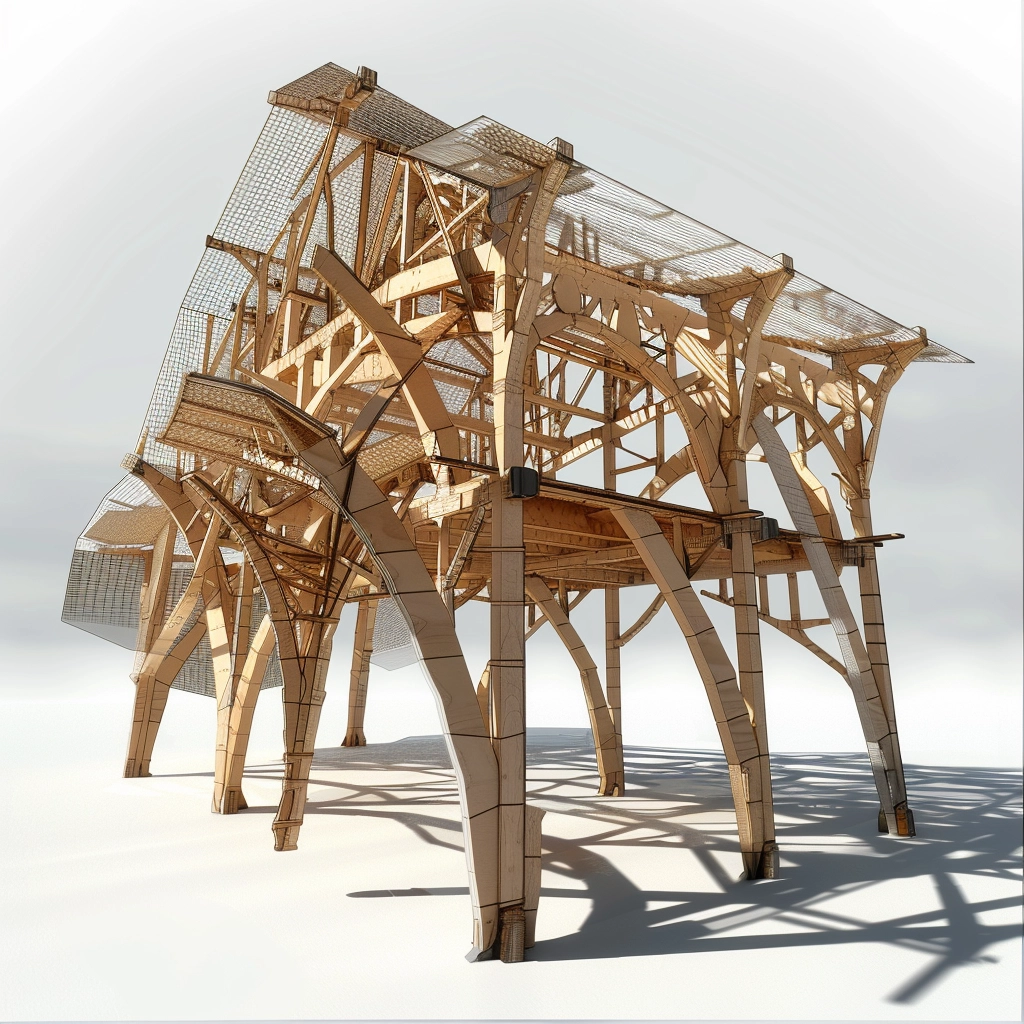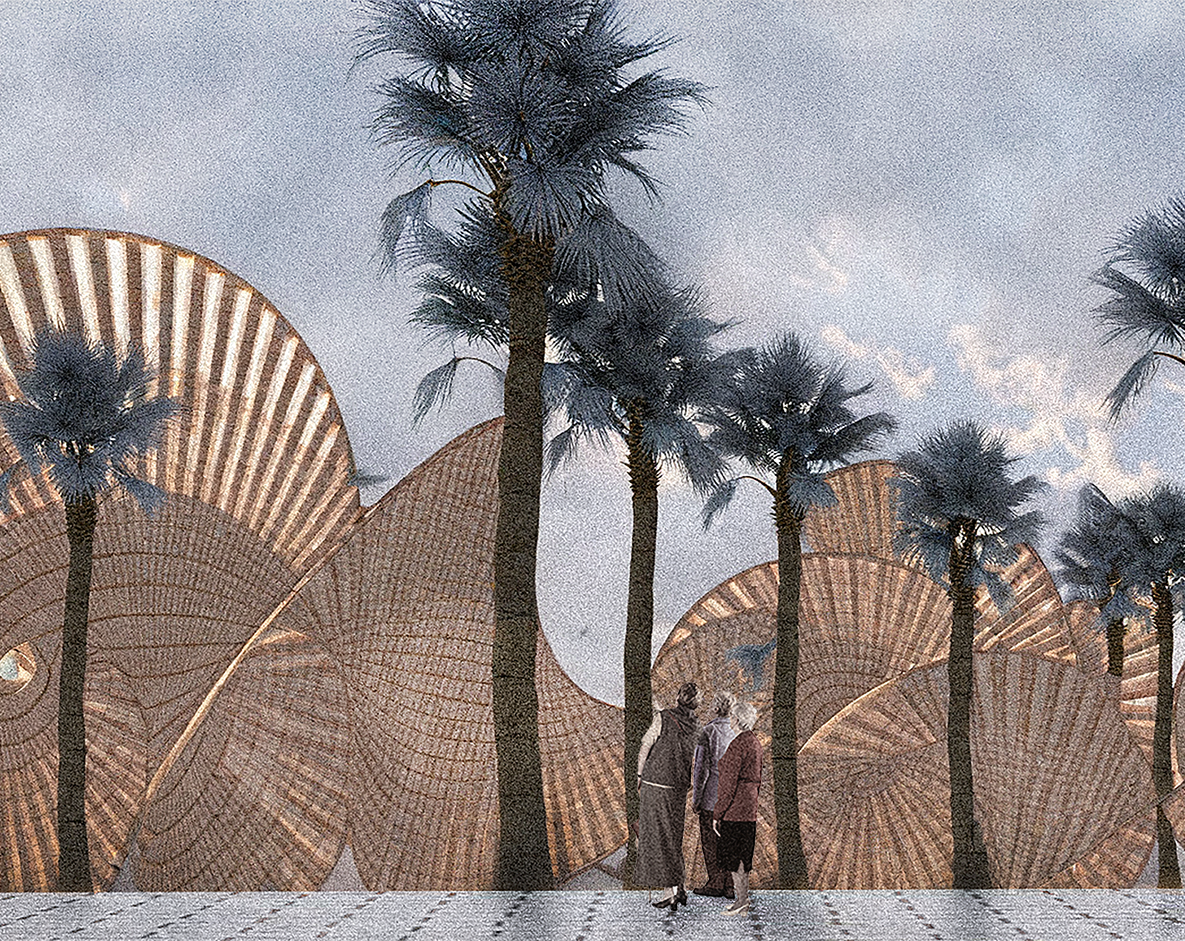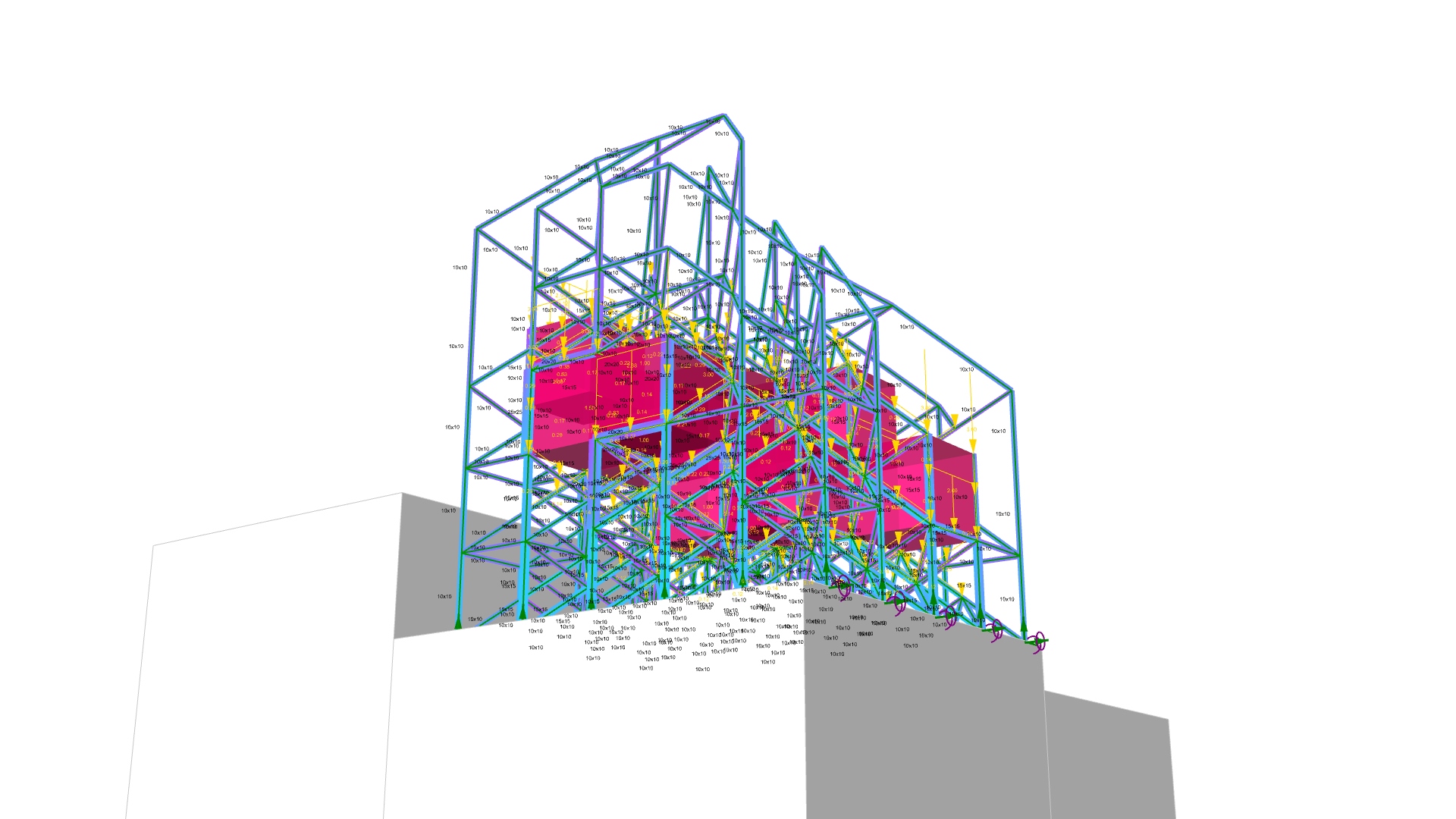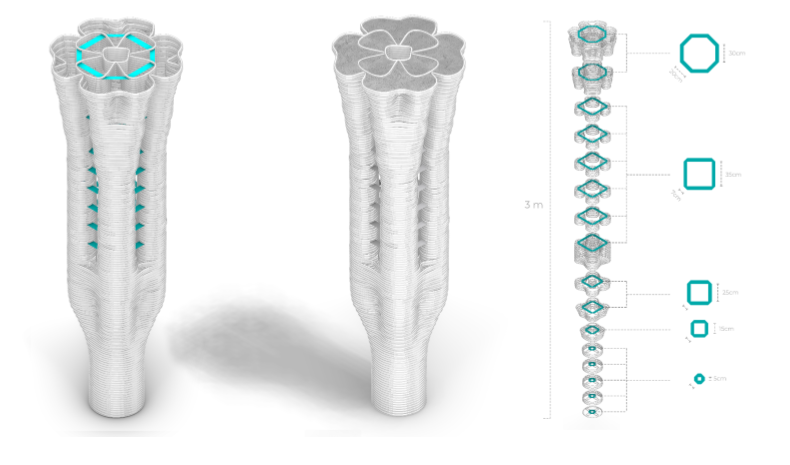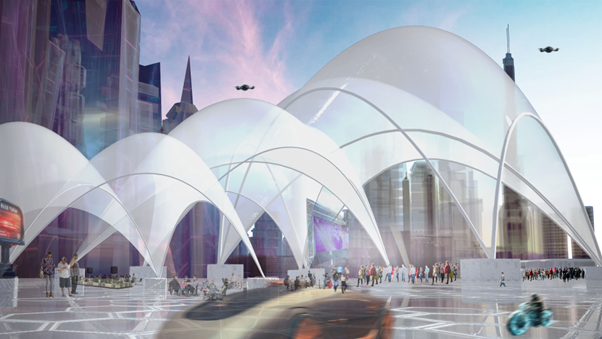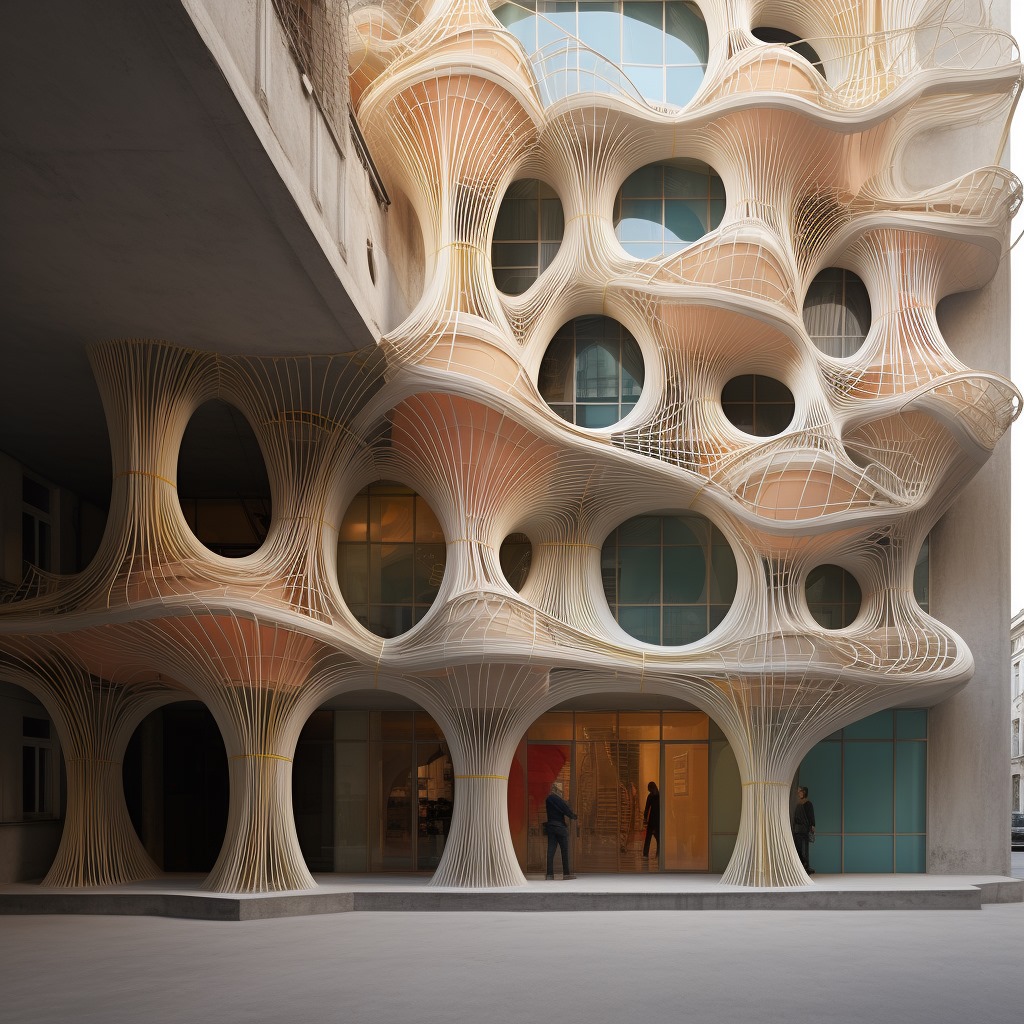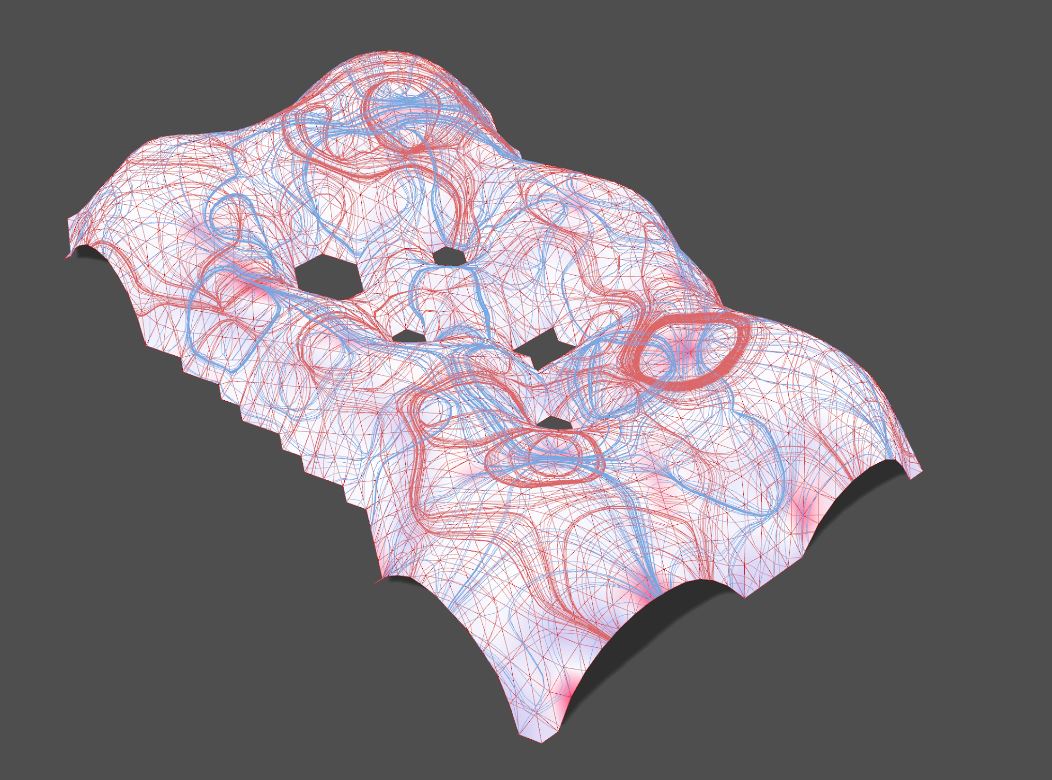Advanced Manufacturing Cluster – T01
Research Question Context Why Natural Fibers? Possible Impact Typologies State of Art Material Research Methodology Design Workflow
The MAA is a visionary master program with an innovative and open structure, mixing diverse disciplines, shaping professionals capable of producing theoretical & practical solutions towards responsive cities, architecture & technology.
Research Question Context Why Natural Fibers? Possible Impact Typologies State of Art Material Research Methodology Design Workflow
This research explores the optimization of glulam in architectural design by aligning material grading and grain orientation with force trajectories. Combining glulam offcuts and higher-grade timber, the study minimizes waste while maximizing structural efficiency. Computational workflows and generative algorithms are used to design force-aligned components for scalable applications. Prototypes demonstrate enhanced performance and sustainability, offering … Read more
COMPUTATIONAL DESIGN SEMINAR-TERM 1 Our proposed pavilion for Plaça del Mar near Barcelona coastline draws inspiration from seashells, featuring a twisted shell structure that blends nature and architecture. Designed using Grasshopper software, the pavilion’s parametric form optimizes shading, wind resistance, and structural stability, offering a sustainable and functional space. This multifunctional landmark celebrates the coastal … Read more
The purpose of the study is to investigate a potential solution for the increasing urban expansion in Cairo’s informal settlements.Could a timber lattice system growing vertically on the roofs of the urban context offer the programmatic growth needed for the community? With different architectural applications depending on the program such as residential, community facilities and … Read more
This thesis explores a transformative approach to construction by integrating topologically optimized 3D printed formwork with fiber embedding between print layers. The research aims to revolutionize traditional construction methods by enhancing structural integrity, material efficiency, and overall performance. Topological optimization algorithms are employed to design intricate yet robust formwork structures, minimizing material usage while maintaining … Read more
Abstract: Architectural space has been non responsive to the dynamic and changing nature of social interaction. Building on the history of responsive architecture, interactive design principles and technological developments in sensing, processing and actuation, the project proposes a new model that merges kinetic architecture and cybernetics. Creating adaptive configurations through automated kinetic architectural skeletons, employing … Read more
“Framed by the environmental crisis and taking into account the thermal and structural inefficiency of the existing building stock, this thesis will be an exploration on architecturally and structurally meaningful elements, as plugin systems to address the need for retrofitting. The main objective is to provide alternatives of structural retrofitting methods by utilizing robotic fabrication … Read more
Introduction In our project, we analyze a timber gridshell characterized by the use of doubly curved laminated timber beams. Inspired by the design of the Haesley Nine Bridges Clubhouse, we have integrated advanced computational and optimization methods such as form-finding, structural analysis, and multi-objective optimization. Our aim is to achieve a harmonious balance between the … Read more



